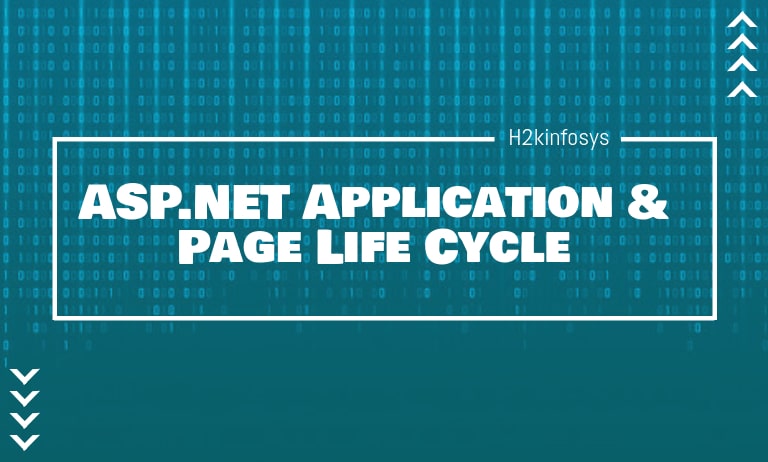Introduction
ASP.NET is a robust framework for building web applications, enabling developers to create dynamic and scalable web pages. Understanding the ASP.NET application and page life cycle is crucial for optimizing performance, debugging efficiently, and enhancing user experience. This knowledge is fundamental for anyone pursuing .Net Development Training and seeking expertise in ASP.NET training.
In this blog post, we will break down the ASP.NET application and page life cycle, covering critical phases, their impact on application performance, and best practices for handling different lifecycle events effectively.
What is ASP.NET?
ASP.NET is a web development framework by Microsoft that allows developers to build dynamic web applications, services, and APIs. It runs on the .NET Framework and .NET Core, providing robust features for building scalable and secure applications.
ASP.NET Application Life Cycle:
When a user requests for accessing a page, this request is sent by the browser to the webserver. A pipeline receives the request and creates an object of class ApplicationManager and an object of class HostingEnvironment to provide the information regarding the resources. When the top-level items are compiled, response objects are created. The application objects like HttpContext, HttpRequest, and HttpResponse are also created. An instance of HttpApplication is then created and assigned to the request.
The above image shows the stages of an application life cycle.
Stage 1: Application Start: This is the initial stage of the life cycle. The application starts as soon as the user makes a request to the server. This happens when the user goes to the homepage for the first time. At this time, a method called Application_start starts executing by the server. In this method, default values are assigned to the global variables.
Stage 2: Object Creation: The second stage of the application is object creation. Object of HttpRequest, HttpResponse, and HttpContext are created. The HttpContext is a container class of HttpRequest and HttpResponse. The HttpRequest contains information about the current request that also includes cookies and browser information. The HttpResponse contains the response returned by the server.
Stage 3: HttpApplication Creation: This object is created by the webserver that is used to process each request sent to the server. Suppose there are two web applications, one is a shopping cart, and the other is the news website. We will have two objects of HttpApplication in this case.
Stage 4: Dispose: This method is used to release the resources. This is called before the application instance is destroyed.
Stage 5: Application End: This is the final stage of the life cycle, where the application is unloaded from the memory.
Understanding the ASP.NET Application Life Cycle
The ASP.NET application life cycle consists of multiple stages that occur from the moment a request is made by a user until the response is sent back. Let’s break down these stages step by step.
1. Application Start
When an application starts, the following events take place:
- The Global.asax file loads.
- The Application_Start event is triggered.
- The application configures global settings, such as routing and authentication.
2. Request Processing
Once the application is running, every request goes through the following steps:
- HTTP Request Handling: ASP.NET intercepts the request via IIS (Internet Information Services).
- Routing: The request is matched to a route defined in the application.
- Handler Execution: The request is assigned to an appropriate HTTP handler.
3. Response Generation
- The requested page is processed by the server.
- A response is generated and sent back to the client.
4. Application End
- The Application_End event is triggered when the application is shut down or restarted.
- All resources are released, and the application stops processing requests.
ASP.NET Page Life Cycle:
When a page is requested, it gets loaded into the server memory. It is then processed and sent to the browser. Then it is unloaded from the memory.
Page Life Cycle helps in writing custom controls and initializing them at the right time. The page class creates a hierarchical tree that contains all the controls of the page. The controls can be seen by adding trace=”true” to the page directive.
The above image shows the different stages of a page life cycle.
Stage 1: Page Request: When the page is requested for the first time from the server, the server checks whether the request is for the first time. If the server finds that the request is for the first time, then it compiles the page, parses the response, and sent it to the user. If the request is not the first time, then it checks the cache to find the page output and then return to the user.
Stage 2: Page Start: At this stage, two objects, Request object, and Response object are created. The Request object contains all the information, which was sent when the page is requested. The Response object contains all the information that is sent back to the user. If the request sent by the user is an old request or posts back, then the IsPostBack property is set to true. UICulture property of the web page is also set.
Stage 3: Page Initialization: At this stage, all the controls, such as labels, text boxes, radio buttons that are available on a web page, are initialized. The UniqueID property of all the controls is also set.
Stage 4: Page Load: At this stage, all the default values are loaded. For example, if the text box has a default value, then it is loaded during the page load time.
Stage 5: Validation: Sometimes, the validation set is also present in a form. If the validation condition fails, then the error will be returned during the page load time.
Stage 6: Postback Event Handling: If the same page is loaded again, this event triggers. For example, while clicking on the submit button, if the same page appears, then this Postback event handler is called.
Stage 7: Page Rendering: This happens just before sending the response to the user. All the response is first saved, and then the result is sent to the user.
Stage 8: Unload: When the page output is sent to the user, then we need to release the memory. The unloading process removes all unwanted objects from memory.
Practical Example of ASP.NET Page Life Cycle
Here’s a basic ASP.NET Web Forms page demonstrating the Page_Load and Button_Click events:
protected void Page_Load(object sender, EventArgs e)
{
if (!IsPostBack)
{
Label1.Text = “Welcome to ASP.NET Page Life Cycle!”;
}
}
protected void Button1_Click(object sender, EventArgs e)
{
Label1.Text = “Button Clicked!”;
}
Real-World Applications of ASP.NET Life Cycle Knowledge
Understanding the ASP.NET life cycle helps developers:
- Optimize application performance by managing request processing efficiently.
- Debug issues effectively by identifying the stage where an error occurs.
- Implement custom logic in different life cycle stages, such as caching data at the Application_Start event.
Best Practices for ASP.NET Development
1. Optimize Application Performance
- Use caching mechanisms to store frequently used data.
- Minimize unnecessary postbacks in Web Forms applications.
2. Secure Your ASP.NET Applications
- Implement authentication and authorization.
- Use HTTPS to encrypt sensitive data.
3. Manage State Efficiently
- Use Session State or ViewState wisely to maintain user-specific data.
- Consider Cookies for small pieces of user information.
4. Debugging and Error Handling
- Use try-catch blocks to handle exceptions.
- Implement custom error pages for a better user experience.
Why Choose H2K Infosys for .NET Training?
At H2K Infosys, we offer comprehensive .Net Development Training that covers:
- ASP.NET Application Life Cycle
- C# Programming & .NET Framework
- Entity Framework & SQL Server Integration
- Hands-on projects and real-world case studies
Our .NET Courses are designed to help you gain practical experience, making you job-ready. Whether you are a beginner or an experienced developer, our .NET Framework Training ensures you acquire in-depth knowledge to excel in your career.
Conclusion
Understanding the ASP.NET application and page life cycle is crucial for efficient .NET development. Master these concepts with H2K Infosys, .Net Development Training, where you will learn from industry experts and gain hands-on experience. Enroll today to accelerate your career in .NET development!































One Response